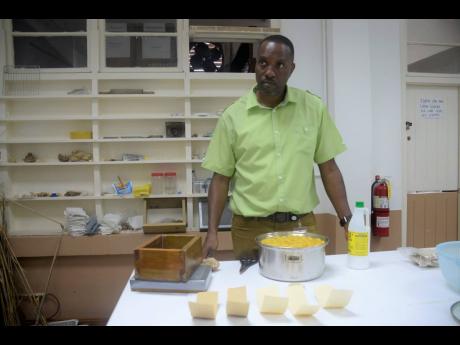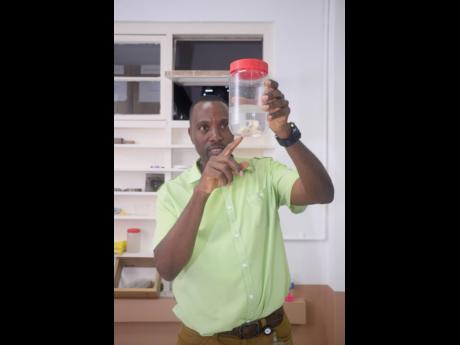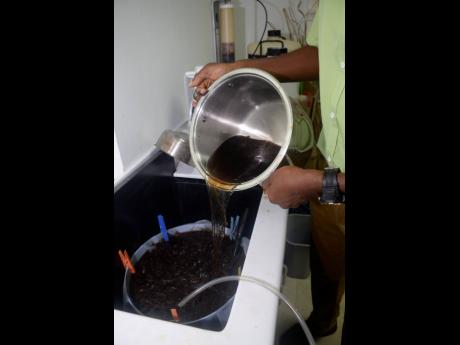All about the paper - NCU professor spinning sugar cane, banana tree pulp into stationery
Paper is generally made from wood fibres, but an assistant professor in Manchester has been experimenting with more than 50 plant fibres as a means of confronting climate change.
When The Gleaner visited Northern Caribbean University in the parish on Wednesday, Dwight Rose was in the process of making two sets of paper from sugar cane and the trunk of a bumpy banana tree.
It was a two-week trip to Japan in 2002 that exposed Rose to cloth and paper making from banana fibres.
“I’ve been improving on it ‘cause they taught us the cloth making, which is to extract the whole fibre and use it and make it into strings,” he recalled.
Rose has placed a greater focus on chemical extraction using sodium hydroxide, the scientific name for caustic soda.
“This is from people at home who eat sugar cane regularly. I just told them ‘when you’re finished eating it, put it aside’,” he said, pointing to the bowl of sugar cane trash soaking in the solution.
“It still has a little bit of the sugar in it, ‘cause you can’t squeeze everything out of it with your teeth; boiling will take care of any germs.”
Through boiling, rinsing and blending, the fibres are prepared to sit on moulds which will determine the paper size.
The dried fibres result in a rustic, textured paper, which is then flattened in a press. To achieve colour variation, he bleaches the sheets.
“I’m just trying to find one that gives me consistent results – texture, smoothness. My intention is not necessarily for the benefit of myself, but I want to teach younger people to make a business from something like this,” he said, adding that the paper is printer-friendly.
POTENTIAL IN ASHES
Last year, he made in excess of 100 sheets from banana and lobster claw plants for a couple’s wedding programme.
“I still want to learn some more environmentally friendly versions like using ashes, ‘cause if you use wood ash, you can actually make potash and then use that to extract the pulp to make the paper,” he explained.
Rose has an interest in exploring bamboo, which is considered a renewable resource and covers an estimated 65,000 hectares in Jamaica.
“If I find another plant tomorrow, I’m going to try it,” an enthusiastic Rose said.






